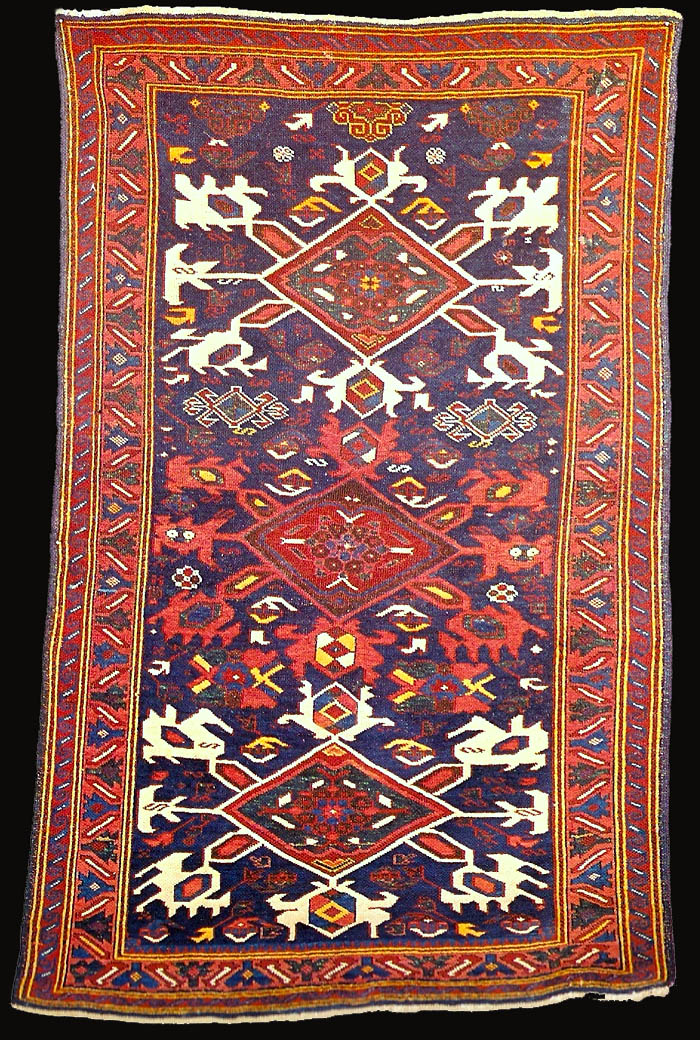|
Antique Kuba
"Bird" rug, late 19th century, possibly Alpan or one of
the surrounding villages, Northern Hillside Kuba Region,
North East
Azerbaijan
|
|
KUBA SEJSHOUR
19th century, 4'4" x 2'9" [m. 1.35 x 0.85}
Warp: wool
Weft: wool, two shoots after each row of knots
Knotting: Ghiordes, wool, 66 knots per square inch [1050 per dm.2]
This vital rug uses watermelon and red on dark blue for emphasis throughout.
These colors, the force of the design, the irregular village weaving, and
the high pile exemplify the attraction of a hand-woven nomadic rug. Its very
lack of finish displays a zest rare in an urban artist and brings a reminder
of primitive life into the most civilized dwelling.
This Sejshour has medallions that are similar to those of the Eagle Kazak
but are probably an earlier form. These medallions will later be refined by
squaring the diamond shapes and enclosing the rays in two more squares
echoing the basic shape.
The two outside medallions are rayed in white and accented in watermelon;
the central medallion is almost all watermelon. Incidental colors are green,
red and yellow, and the background is dark blue. The three narrow guard
borders are yellow, with a barber stripe of red and black down the center.
The wide inside border is watermelon with a version of the leaf-and-cup
design, the leaf being red with a white stripe in the middle. The outside
border is red with a suggestion. of the running dog in a tracery of blue.
published at Luciano Coen & Louise Duncan's The Oriental Rug, plate 58
Lit: Luciano Coen & Louise Duncan's The Oriental Rug
 |
